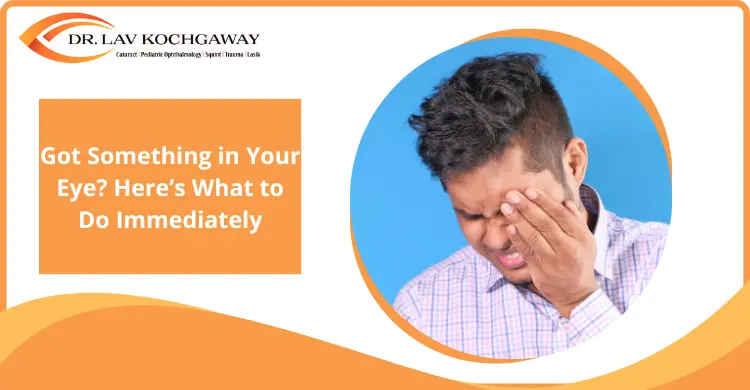
A sudden sting, watery eyes, and blurred vision, you know the feeling. Something’s stuck in your eye, and you need to act fast. But what should you do first? Rubbing your eye might be your instinct, but it could make things worse. Even the tiniest object in your eye can feel overwhelming, and the wrong reaction can make things worse. Quick, proper first aid for eye injury makes all the difference in preventing long-term problems.
In fact, a meta‑analysis of 28 Indian studies estimated that 3.75% of the population experiences an eye injury at some point, translating to nearly 3.7 million cases across India annually (based on 2021 population). Despite how common these injuries are, many people remain unaware of the right steps to take when they happen.
This blog walks you through how to respond quickly, recognize warning signs, and protect your eyes from further harm with trusted first-aid advice.
Before you try to flush your eye or blink it out, it’s good to know what might be stuck in there. Many things can get into your eye, and here are some usual suspects:
How do you know if it’s just irritation or something more serious? Keep an eye on these symptoms:
If these persist after trying to flush your eye, it may be time to seek professional help.
If you’re thinking, “I’ve got something in my eye, what now?” take a deep breath. Here’s what you should do:
Sometimes our instincts work against us. Here’s what you should avoid:
Some situations call for urgent care. Don’t wait if you experience:
If you’re ever unsure, play it safe and get it checked.
Eye injuries are often preventable with simple, everyday precautions that keep your vision safe and irritation-free.
Your eyes are delicate, and even a minor injury can become a major problem if not treated properly. If you’ve got something in your eye, don’t just brush it off. Take swift, careful steps to assess the situation. Avoid those harmful home remedies, and when in doubt, get expert help.
Protect your eyes before small irritants become serious concerns. Dr. Lav Kochgaway offers expert, personalized care to keep your vision safe and healthy.
Book your consultation today for timely guidance and long-term eye protection.
Blink repeatedly and flush with clean water. If it won’t come out or causes pain, seek medical help to avoid damage or infection.
It may be minor, but if you experience persistent discomfort, vision changes, or redness, it’s best to consult a doctor for proper evaluation and care.
Use clean, lukewarm water or sterile saline. Tilt your head sideways and gently rinse from the inner corner outward for several seconds, avoiding contact with the eye.
Rubbing can push the object deeper or scratch your cornea, leading to more irritation or infection. Always try flushing or blinking instead.
See a doctor if symptoms persist after flushing, if there’s vision loss, pain, bleeding, or if the object is embedded or of a chemical nature.